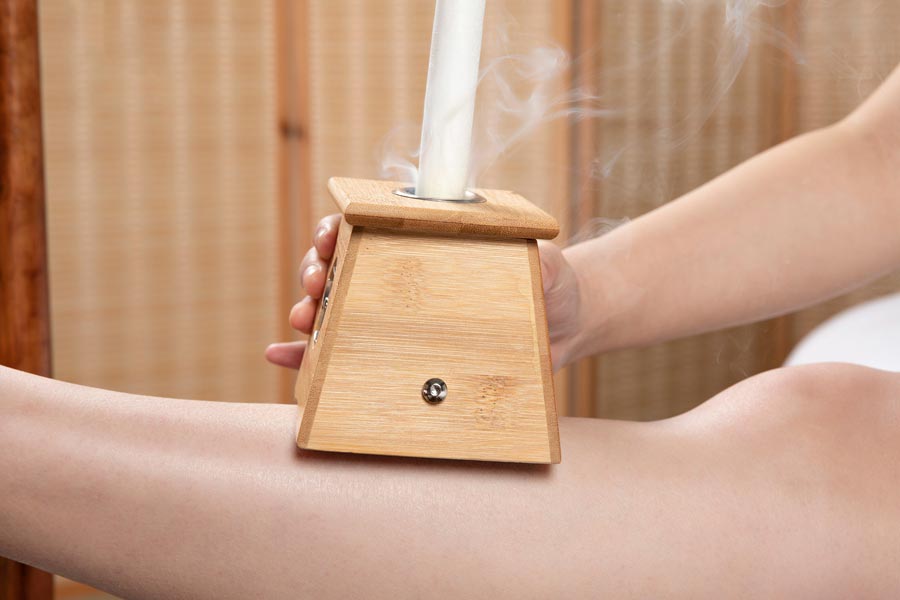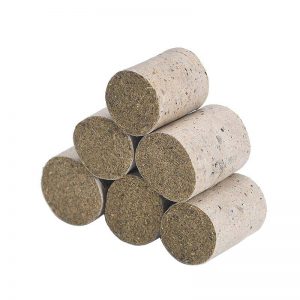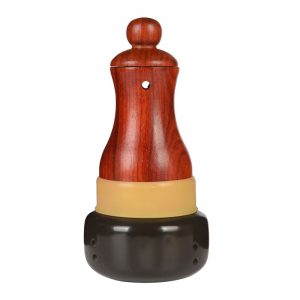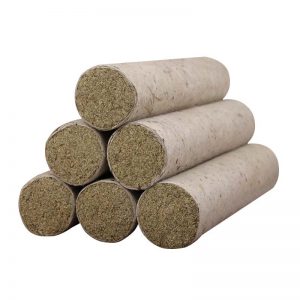Functional constipation is caused by a lack of intestinal motility and manifests as prolonged intervals between bowel movements or difficulty in passing stool despite a desire to defecate. The disorder can be related to psychological factors, congenital abnormalities, infection, abuse of laxatives, long-term intentional holding in of stool, and dysfunction of the nerves controlling the internal and external anal sphincters.
In TCM, the disorder can be caused by heat in the large intestine, qi stagnation, phlegm coagulation, or deficiencies of yin, yang, qi or blood. It is related to the lung, spleen and kidney. Any disease affecting the stomach and the intestines can cause constipation, including binding of dryness-heat in the interior, inability to move due to qi stagnation or deficiency, lack of moisture in the intestines due to yin-blood deficiency, and yin-cold coagulation.
Clinical manifestations of functional constipation
- Reduced frequency of defecation with dry feces, such as one bowel movement every three or more days.
- In severe cases, the patient has difficulty defecating with pain and anal fissures.
4 Acupuncture points for functional constipation
The basic therapeutic principles are to free and regulate the intestines, and promote defecation. Relevant acupoints are chosen based on the following principles: the large intestine governs conducting and transmitting; the large intestine prefers free flow; the lung and large intestine have an interior-exterior relationship; the kidney governs water; the spleen governs transportation and transformation; the large and small intestines belong to the stomach.
1. ST 25 Acupoint (Tianshu)
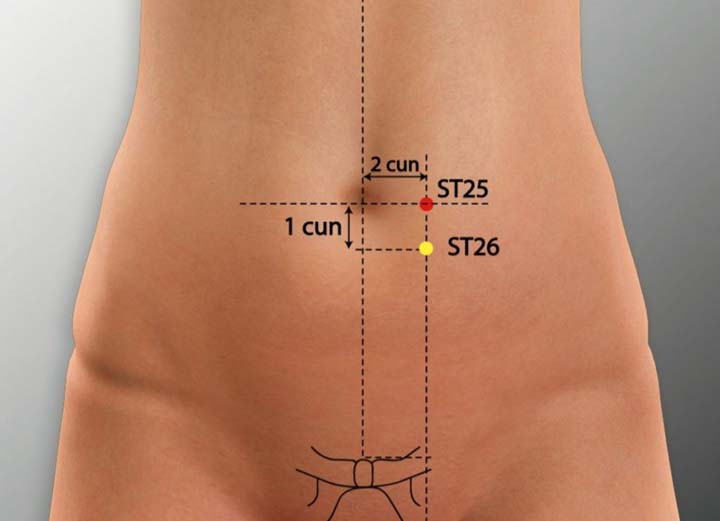
Location: On the abdomen 2 cun lateral to the umbilicus, in the rectus abdominis muscle.
Effect: Regulates the stomach and intestines, rectifies qi, and removes food stagnation.
2. BL 25 Acupoint (Dachangshu)
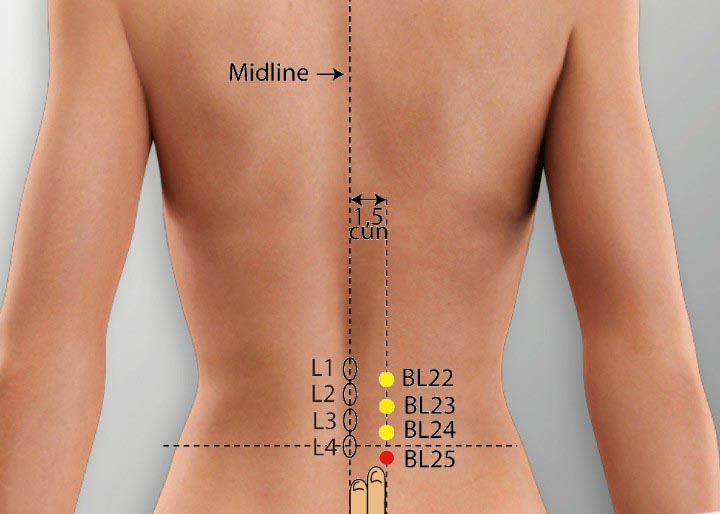
Location: On the lower back 1.5 cun lateral to the posterior midline, level with the lower border of the spinous process of the fourth lumbar vertebrae.
Effect: Rectifies qi, dredges the bowels, regulates the stomach and intestines.
3. BL 32 Acupoint (Ciliao)
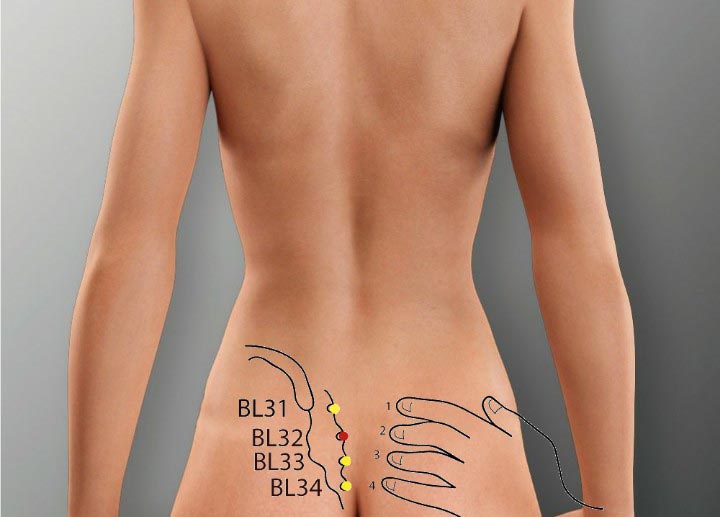
Location: On the medial-inferior side of the posterior inferior iliac spine, over the second posterior sacral foramina.
Effect: Promotes urination and defecation, regulates the lower jiao.
4. ST 37 Acupoint (Shangjuxu)
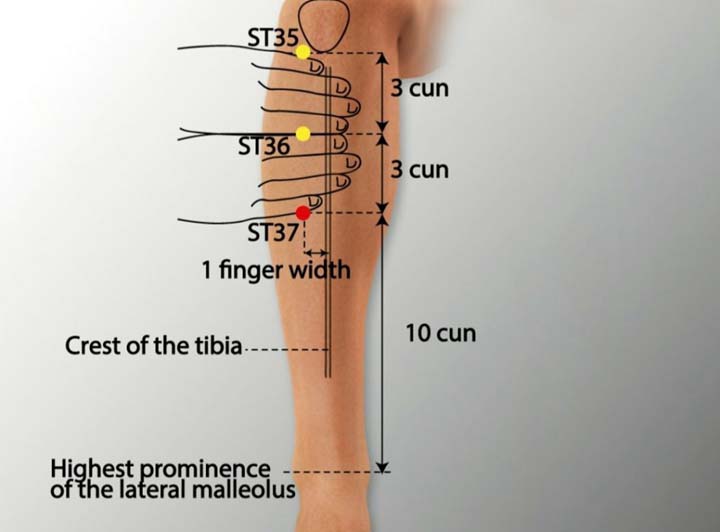
Location: 6 cun below ST 35 and 3 cun below ST 36.
Effect: Regulates the spleen and stomach, loosens the intestines, guides qi.
Moxibustion treatment methods
- Double-point mild moxibustion on ST 25. The patient should feel the heat penetrate deep into the abdominal cavity or expand along the sides to the lumbar region. ST 25 is the front-mu point of the large intestine, and can regulate the stomach and intestines, rectify qi and disperse stagnation.
- Double-point mild moxibustion on BL 25. The patient should feel the heat penetrate deep into the abdominal cavity or expand along the sides along the dai mai to the abdomen. BL 25 is the back-shu point of the large intestine, and can rectify qi, dredge the bowels, and regulate the stomach and intestines.
- Double-point mild moxibustion on BL 32. The patient should feel the heat penetrate into the abdominal cavity, or transmit to the lumbosacral region or lower limbs. BL 32 can promote urination and defecation, as well as regulate the lower jiao.
- Double-point mild moxibustion on ST 37. In some patients, the heat will reach the abdomen. If this does not occur, administer relaying moxibustion with another moxa stick on the most proximal place the heat has reached to induce the heat to transmit to the abdomen. Finally, administer mild moxibustion on both ST 37 and the abdomen until the heat-sensitive sensation disappears. ST 37 is the lower he-sea point of the large intestine, and can regulate the spleen and stomach, loosen the intestines and guide qi.
Treat once a day, choosing one or two groups of the above acupoints. Ten treatments make a course. In total, give two or three courses with two to five days rest between each course.
Conclusion
Moxibustion can regulate intestinal motility to treat functional constipation. Patients should be advised to make regular defecation a habit, get plenty of physical exercises to promote intestinal peristalsis, and their diets should include plenty of vegetables, fruit, and not much spicy food.

